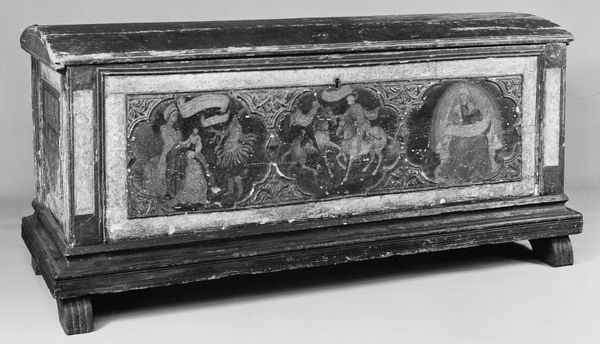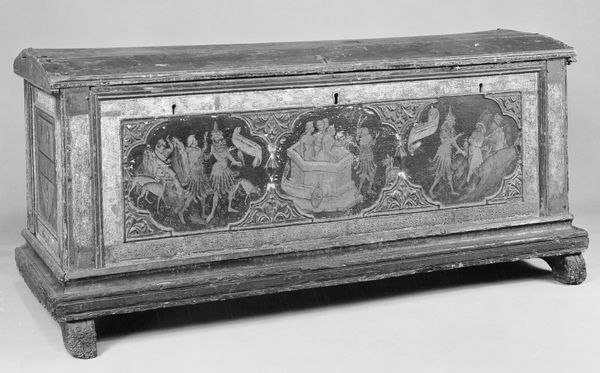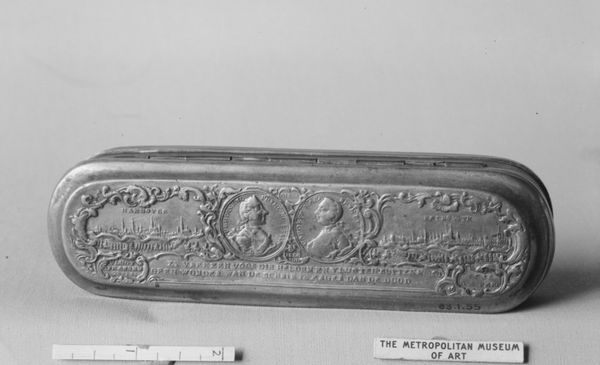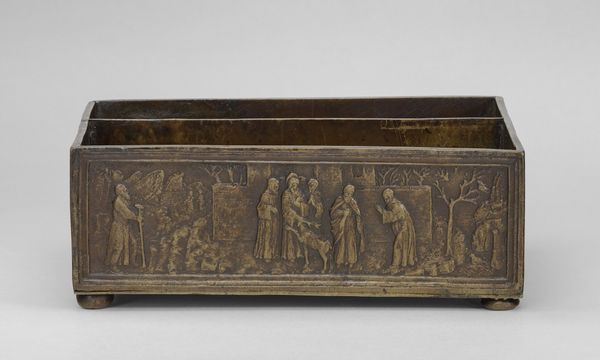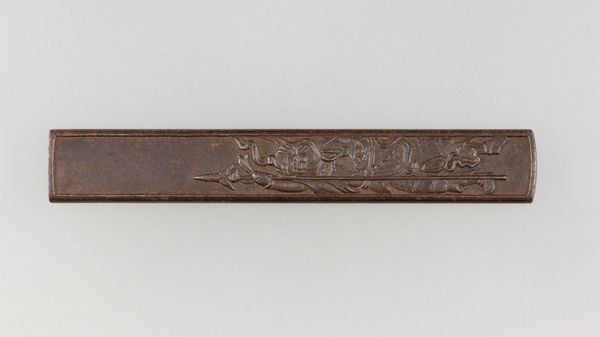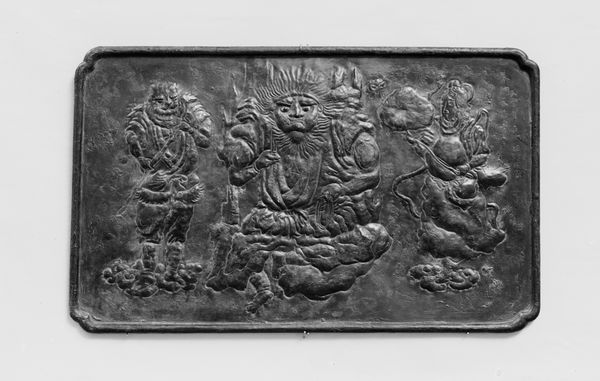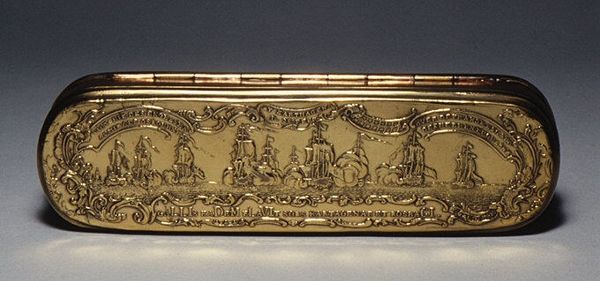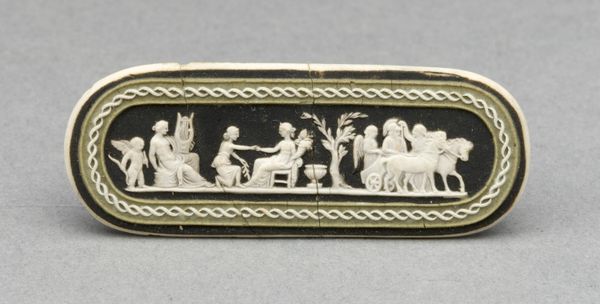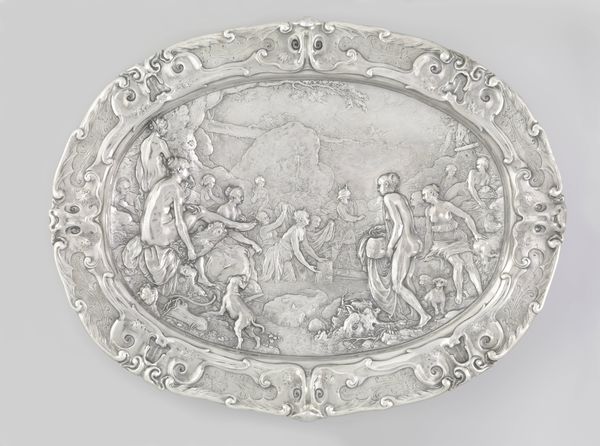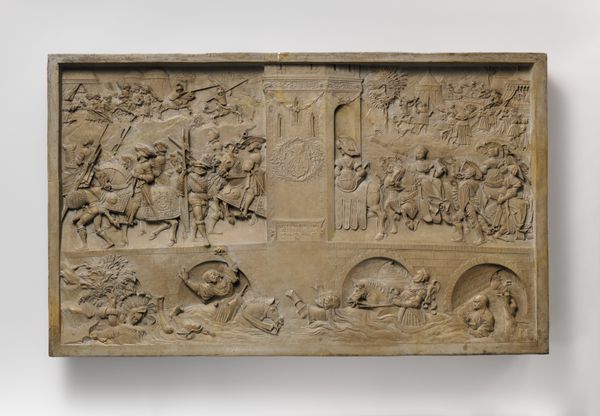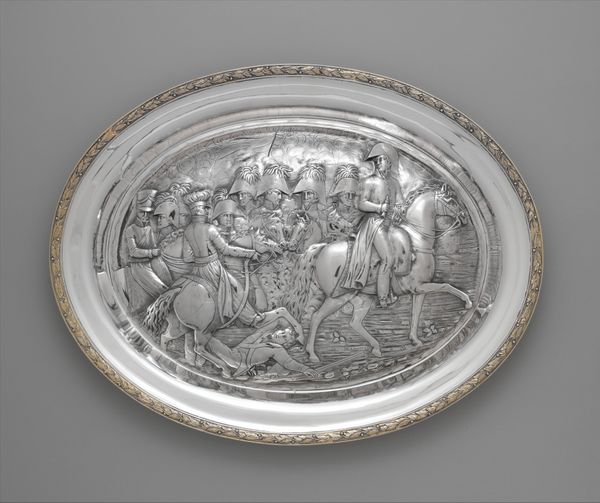
metal, relief, sculpture
#
baroque
#
metal
#
relief
#
figuration
#
sculpture
#
genre-painting
#
decorative-art
Dimensions: 1 5/8 × 5 in. (4.1 × 12.7 cm)
Copyright: Public Domain
Curator: This delicate metal box, dated circa 1755-1765, and titled "Tobacco Box", presents a fascinating glimpse into 18th-century social life. Editor: It looks like a snapshot of leisure. The ornamentation gives it an air of gentility, like a tiny stage setting for aristocratic dalliances. Curator: Precisely. We see a gathering of figures in relief across the top. It’s pure genre painting shrunk to fit in your hand, literally. What stories does it whisper to you about social dynamics, class? Editor: Immediately, it conjures conversations about class privilege. The figures are undoubtedly from the elite, engaged in refined social rituals around the tea table. The gendered aspect of it stands out; women are seated in ornate gowns, seemingly being served by men. It perpetuates power dynamics. Curator: It’s true that it reflects an established social order. The artwork serves as a historical marker of social performances in a European, possibly German, court. Think about the role tobacco played then – its ritual and accessibility signified belonging to a certain group. Editor: It also reminds us that decorative arts aren't politically neutral. Objects like this reinforced those aristocratic performances and hierarchies through art accessible to everyone, regardless of if you were participating in the soiree pictured on top. Even through enjoying tobacco. Curator: Absolutely. It allows a conversation around power structures. What does it mean to condense such activity into art on everyday object? It makes such status not only palatable but intimately enjoyed in a consumer object. Editor: And beyond being pleasing it serves a cultural purpose—reminding one’s self of their status through casual interaction. It’s a potent reminder of the embedded narratives within art, and a springboard for critical inquiry. Curator: Indeed. A decorative artwork that serves to show us the importance of understanding the historical narratives and social context.
Comments
No comments
Be the first to comment and join the conversation on the ultimate creative platform.
